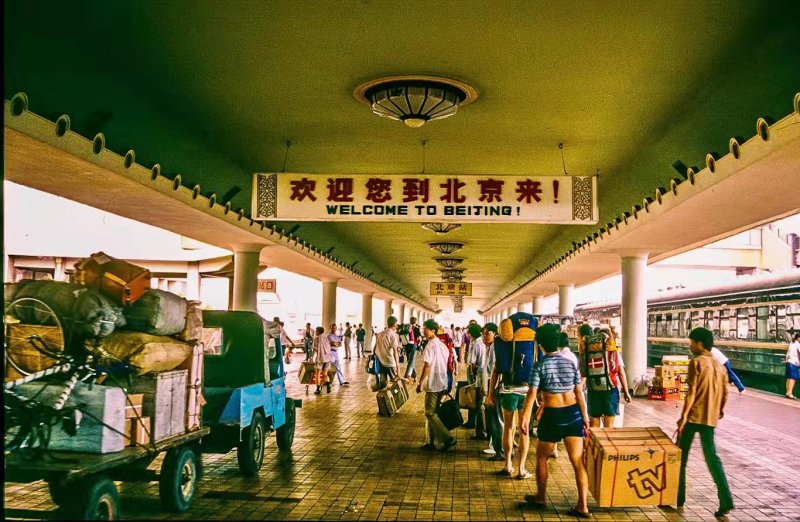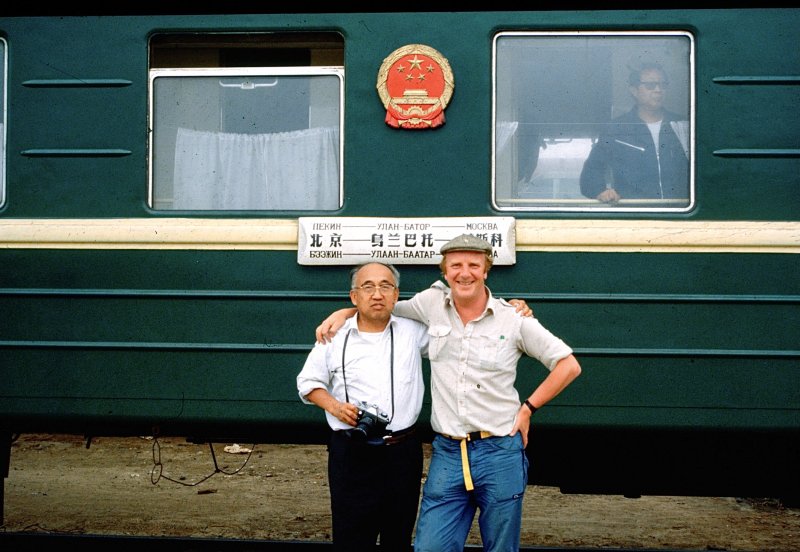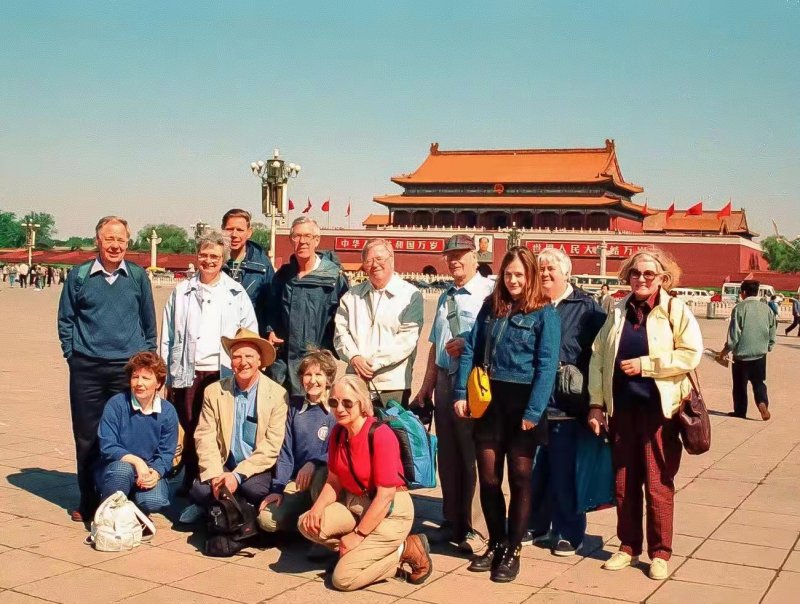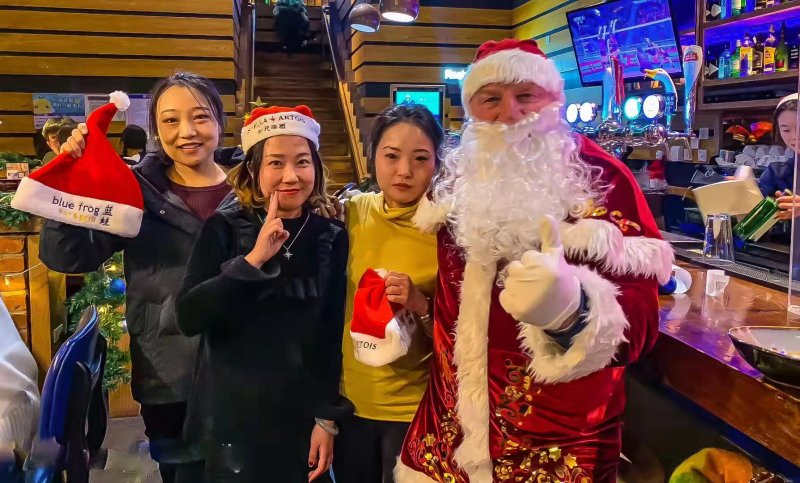20 for 20: Scottish Photographer Bruce Connolly
As we continue our celebration of 20 years of The Beijinger, we’re taking a closer look at some of the expats who have been here for two decades and those who have had an oversized impact during their stay.
Whether you have been in China 20 years or 20 days, chances are that you know, or know of, Scottish photographer Bruce Connolly, who has called the capital home for more than 30 years. I had heard about Bruce from many different people in Beijing before ever meeting him in person, which truly made him somewhat of a legend in my mind.
Bruce often spends his time mingling with the locals, but can also be found mingling with expats at different functions, events, and ceremonies. If he’s not there as a guest, you’ll most likely see him snapping shots at such functions. But Bruce isn’t just someone out to document China with his camera, for he’s also an accomplished broadcaster, public speaker, and writer.

What brought you to Beijing, and when?
I had been a Great Railway traveler and had already travelled through many countries. In 1987, I decided to look eastwards: and in July that same year, came overland by train from Glasgow, Scotland, passing through Europe, the former Soviet Union, Mongolia, and the Chinese Mainland, before I eventually arrived in Hong Kong.
What were some of your first impressions of the city?
Beijing in 1987 was so different compared to the cities I knew in the UK or Europe. No resemblance to my home city, Glasgow. Technologically it was much more intermediate. Bicycles were still then very common, and they flowed in unison (no racing); they just went with the flow. People dressed relatively modestly. Many men wore white shirts, and ladies were not in the high fashion we see today in Beijing, but there was an amazing beauty about the place.

People I found very friendly and indeed curious about where I came from. There were very few cars, and the buses were the “bendi-buses” that used to be common on Beijing’s streets. The city had very few high buildings; everything in Beijing was still mostly low-rise. The food was great and totally unlike any Chinese food I had experienced in the West. Also, there was a real feeling of safety in the city and despite the city being in a relatively early stages of development at the time, it was also very clean.
The places I visited were magnificent, including the Forbidden City, Temple of Heaven, and the Great Wall at Badaling. I very quickly developed a real fascination for Beijing and indeed China.
Did you imagine at that time that you’d still be here more than 20 years later?
No way did I imagine that I would be here more than 20 years later. At that time, I was a traveler, but I had a full-time job back in Scotland. Yet, I knew when leaving Hong Kong on the long flight back to the UK that someday I wanted to return to China.

Can you tell us about one of your quintessential first experiences in the city?
On the train approaching China from Mongolia, I was a bit apprehensive. I had no idea what to expect. However, as we crossed over the border, I met a man in the same coach as me named Mr. Li. He put his hand out and shook mine, with the words “Welcome to China, you are Welcome!” I have never forgotten that. Also arriving at Beijing Railway Station, a sign above the platform read in English “Welcome to Beijing”. In autumn 2020, on the front cover of the SCMP Magazine, there is a photo of me and Mr. Li shaking hands alongside the train.
What’s changed the most since you first arrived?
There have been huge changes, but thankfully not everything has changed. Even though the streets are crowded with cars, cycling is still popular, but now everyone uses shared bikes. The city has grown outwards and upwards; just look at Guomao and the CBD with CITIC Building, aka “China Zun”. The city’s architecture reflects a new era compared to the more conformist style of past years. Lifestyles for many young people are so different, and they have much more consumer influence.

And of course, we are in a smartphone world, so it’s impossible to go anywhere without the phone. Many older people still retain their traditional lives as we can see in the parks every day. The subway system today is world leading in many respects, and buses are all environmentally friendly. There is also a much greater awareness of protecting and conserving the city’s unique heritage. Also, the main railway stations are a paradise compared to the early experiences I had.
How do you think Beijing has changed you as a person?
In some ways I have become much more harmonious. I tend to be more easy going and more prepared to compromise. I now tend to go with the flow and avoid getting into arguments. I always travel on public transport, often to the surprise of many locals, but there again I have learned to be harmonious and be part of the community.

What’s your main reasons why Beijing continues to be a draw for you to this day?
With my academic background, which includes historical geography, I quickly saw Beijing was an exceptional city in its early layout and ancient urban planning. I developed a great interest in researching the city. Also, Beijing as is China, is fabulous for photography. I have a passion for documenting “through the lens” the everyday life of Beijing and the people. They are very friendly to me as a photographer, and I have received many good comments from people when see my photography of the city.
Can you tell us three of your favorite places in the city?
These are many personal favorite locations in Beijing:
1. Presently I have been doing a lot of photography at the Sanlihe area east of Qianmen. It is an excellent example of a unique historical heritage area of Old Beijing. I have also written about it and taken people on walks there. Again, I have had many comments internationally of my photography there.
2. The outdoor terrace at China World Mall 3. You can stand there and look across at the new landscape of the CBD with China Zun and nearby the CCTV HQ. I have been involved in making videos about Beijing and I encourage the film teams with me to use that as a location.

3. Silver Ingot Bridge (yindingqiao) at Shichahai. I first discovered that historic bridge in 1994 and it has retained that feeling (although the surrounding area has inevitably become touristy!)
And here is another! The newly opened Subway Line 19, at the front coach. I can stand behind the driver and watch as we zoom at high speeds through the tunnels, it is a train buff’s dream!
What’s one piece of advice you have for relatively recent arrivals?
Take it easy. Beijing may look increasingly international but there is a deep culture and long history behind it. Respect the culture and don’t argue when asked to do something that may feel different to what you have been used to back in the West. I have travelled all over China, often on my own and have had very few problems. If you are polite with people, if you smile, they can be very helpful.

Try to learn more about China, it is indeed a fascinating country, the people are very proud of their country, and it is good to remember that. Remember that with such a large population, the concept of a “harmonious society” is very important. Most of my time spent here is often on my own, but also with the local people. I love those moments. There is much to be had and learned from going into the areas where locals go, such as the parks.
I noticed when I have occasionally gone back to Scotland, friends have told me I have changed in many ways and indeed have adopted a more Chinese way of getting on with life.

Are you still doing what you came here to do, 20 years ago?
I am still out photographing Beijing, but today digital makes it much easier and more productive. I am still walking around and still have a deep fascination for all I am seeing around me. I am still learning more about Beijing and indeed China.
READ: 20 for 20: BASF Vice President Joerg Wuttke
Images courtesy of Bruce Connolly







